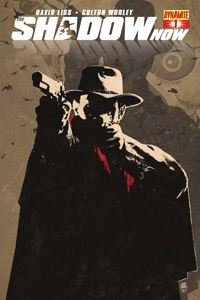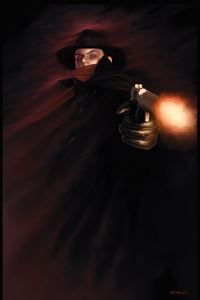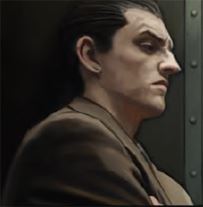- Comics
- Comics Reviews
- Manga
- Comics Reviews
- European Comics
- News
- Comics News
- Press Releases
- Columns
- Spotlight
- Digital Comics
- Webcomics
- Cult Favorite
- Back Issues
- Webcomics
- Movies
- Toys
- Store
- More
- About
By Philip Schweier
May 6, 2014 - 15:39
In 1986, DC Comics published a four-issue
miniseries, The Shadow: Blood & Judgment, bringing the pulp-era
character into contemporary times. This led to an ongoing series that ran for
19 issues and two annuals.

The Shadow Now #1, cover by Tim Bradstreet
Currently, Dynamite holds the license to The Shadow, and has capitalized on it
by featuring the character in multiple series: The Shadow; The Shadow Year
One; Masks; The Shadow and the Green Hornet: Dark Nights; and the recently
concluded six-issue series, The Shadow Now.
Written by mystery/thriller novelist David Liss and illustrated by Colton
Worley, The Shadow Now is set in
modern day, launching from ideas originally introduced in the DC series so many
years ago. The Shadow’s alter ego, an ageless Lamont Cranston, claims to be a
descendant of the original. Mavis Lockhart, a modern-day counterpart to The
Shadow’s original friend and companion, Margo Lane, operates The Shadow’s vast
network of agents, which provides The Shadow with the critical intel that aids
his battle against crime.
However, when The Shadow’s organization is infiltrated by agents of his
greatest nemesis, he is forced to flee underground. Injured and (almost) alone,
he must challenge the growing threat that is determined to rebuild a criminal
empire.
David Liss writes a taught crime thriller, in which the motives of
almost all the main characters are suspect, or at least unclear. Not in a vague
ambiguous way, but whatever you think they might be, be prepared to be
surprised. I found it refreshing that most of the characters did not fall into
a predictable, cookie-cutter mold.

The Shadow, as rendered by Colton Worley
If there is an exception to that, it would be The Shadow himself. He remains
true to the pulp/comic book hero fans have come to love. Perhaps in some ways,
he may seem less super-human than we are accustomed, but that may vary
depending on your level of exposure to the character.
Colton Worley’s painting is lovely, and certain panels are reminiscent of Alex
Ross, either in texture or design. Not a bad thing, and characters are rendered
to give each distinct facial personalities, portraying a heightened sense of
reality. This is especially true of Lamont Cranston. Worley deemed determine to
provide a physical character unlike any we’ve seen before, and pulls it off
quite effectively.
If there is any flaw in his artwork, it perhaps is due to the
nature of the narrative. As a Shadow tale, it of course lacks much lighting,
resulting in some the panels being a bit muddy.

The Shadow, as rendered by Colton Worley
Overall, the story is a welcome chapter in The Shadow canon. I hope to see
more.